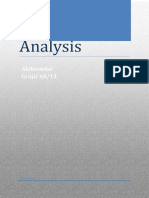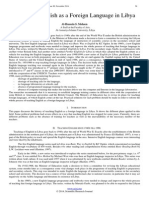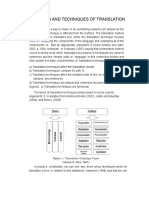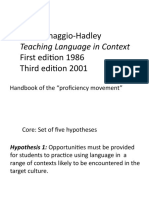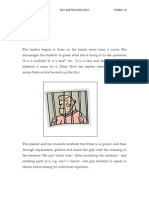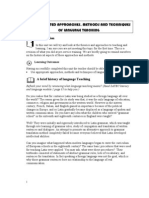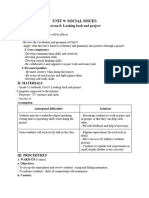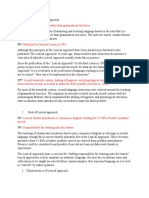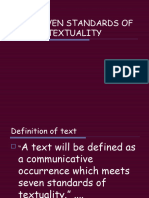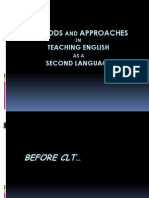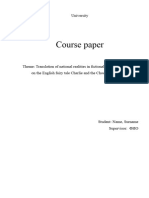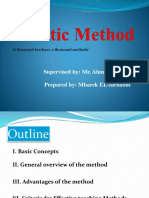0% found this document useful (0 votes)
678 views1 pageLanguage Transfer & Error Analysis
This document discusses language transfer, which refers to applying knowledge from a native language to a second language. It can result in either positive or negative transfer. Positive transfer occurs when the relevant structures are the same in both languages and leads to correct language production. Negative transfer happens when different structures are applied and causes errors. The degree of difference between the two languages determines how much negative transfer may take place.
Uploaded by
xiao_fenCopyright
© Attribution Non-Commercial (BY-NC)
We take content rights seriously. If you suspect this is your content, claim it here.
Available Formats
Download as DOC, PDF, TXT or read online on Scribd
0% found this document useful (0 votes)
678 views1 pageLanguage Transfer & Error Analysis
This document discusses language transfer, which refers to applying knowledge from a native language to a second language. It can result in either positive or negative transfer. Positive transfer occurs when the relevant structures are the same in both languages and leads to correct language production. Negative transfer happens when different structures are applied and causes errors. The degree of difference between the two languages determines how much negative transfer may take place.
Uploaded by
xiao_fenCopyright
© Attribution Non-Commercial (BY-NC)
We take content rights seriously. If you suspect this is your content, claim it here.
Available Formats
Download as DOC, PDF, TXT or read online on Scribd
/ 1
